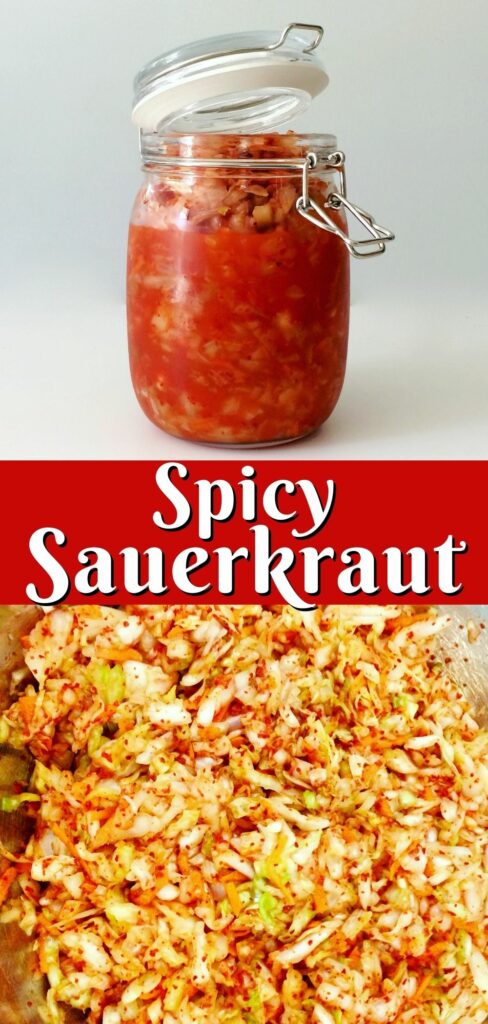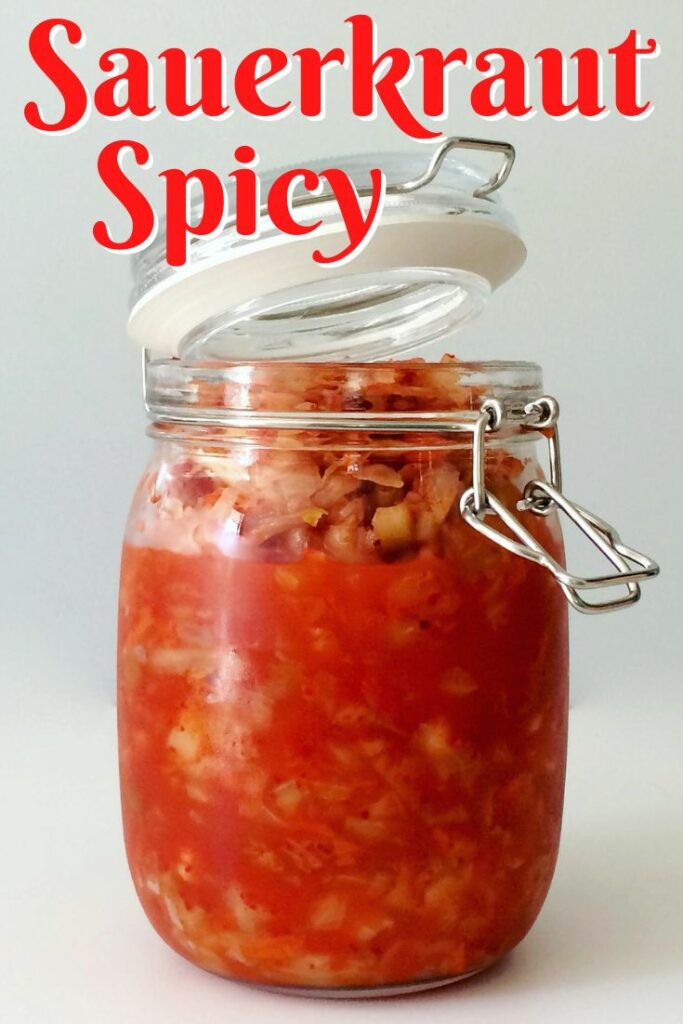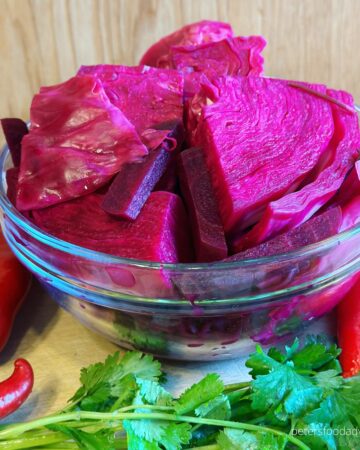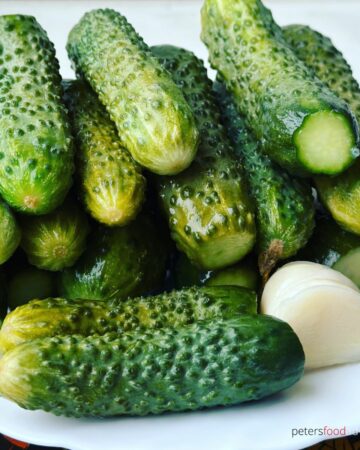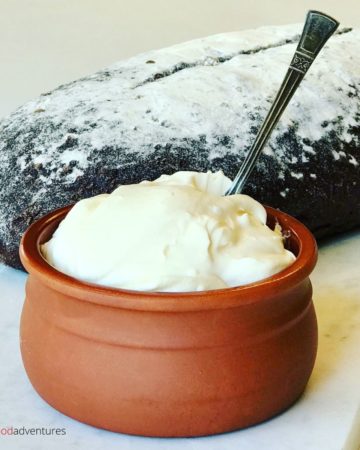You'll fall in love with Spicy Sauerkraut, not your traditional fermented cabbage flavor! Give your recipes a zing with this tangy and crunchy condiment that will boost the flavors of any meal (and your gut health too!).
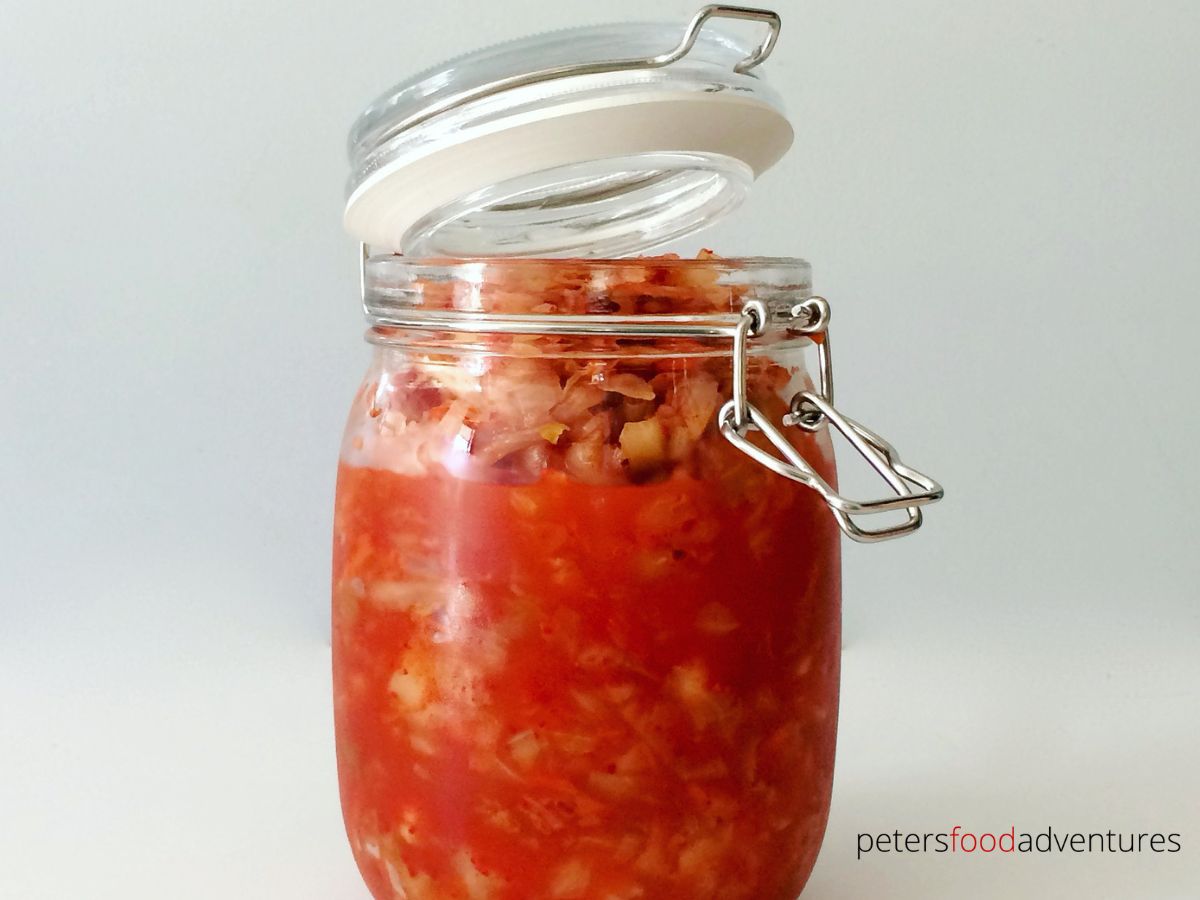
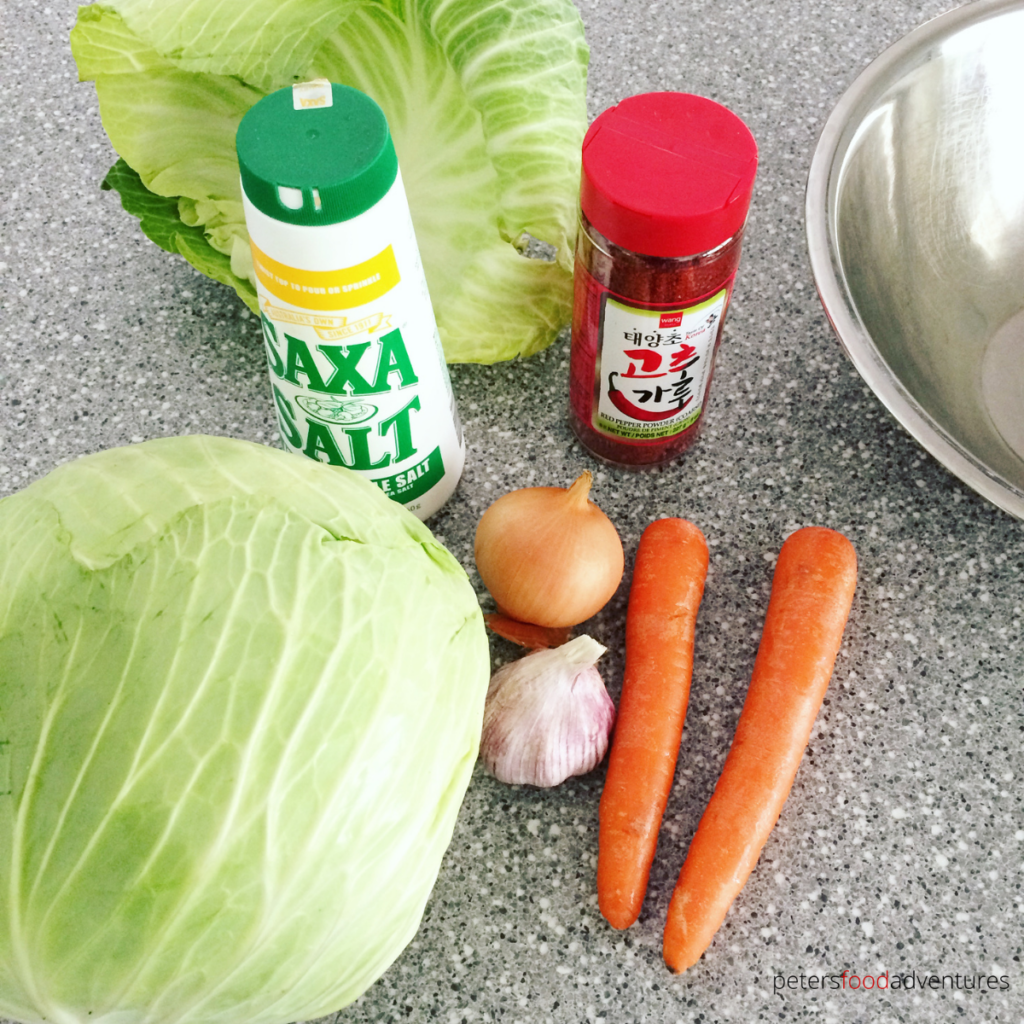
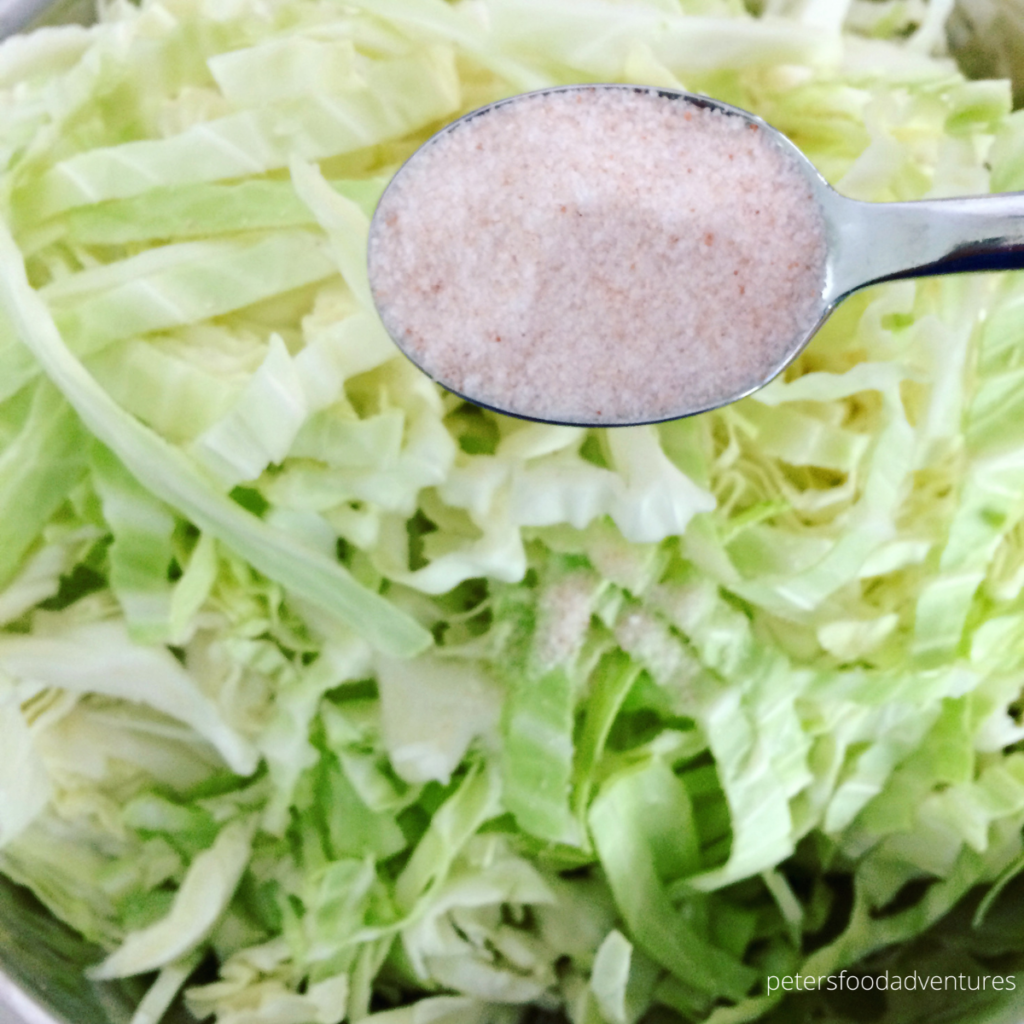
Fermented Spicy Sauerkraut is so incredibly healthy to eat, and not a new, trendy idea. Historically this provided food to get through the winter. Eastern Europe and Germany have Sauerkraut, Korea has Kimchi, and Central America has Curtido. Sauerkraut is fermented cabbage.
Why You'll Love This Recipe
- Flavorful - not only do you have the classic sauerkraut flavors, but they are married to a spicy explosion of flavor
- Probiotics - a healthy gut starts with natural probiotics which boosts your immune system. This natural process is great for you
- Enjoy with Anything - so versatile, boosts the flavors or burgers, sandwiches, salads, wraps and more
Ingredients
- Cabbage Head - medium sized is perfect for this recipe
- Salt - non-iodized (used Himalayan Salt)
- Garlic and Onion
- Carrot - adds sweetness and brightness
- Chili Flakes - Gochugaru Korean Chili Flakes

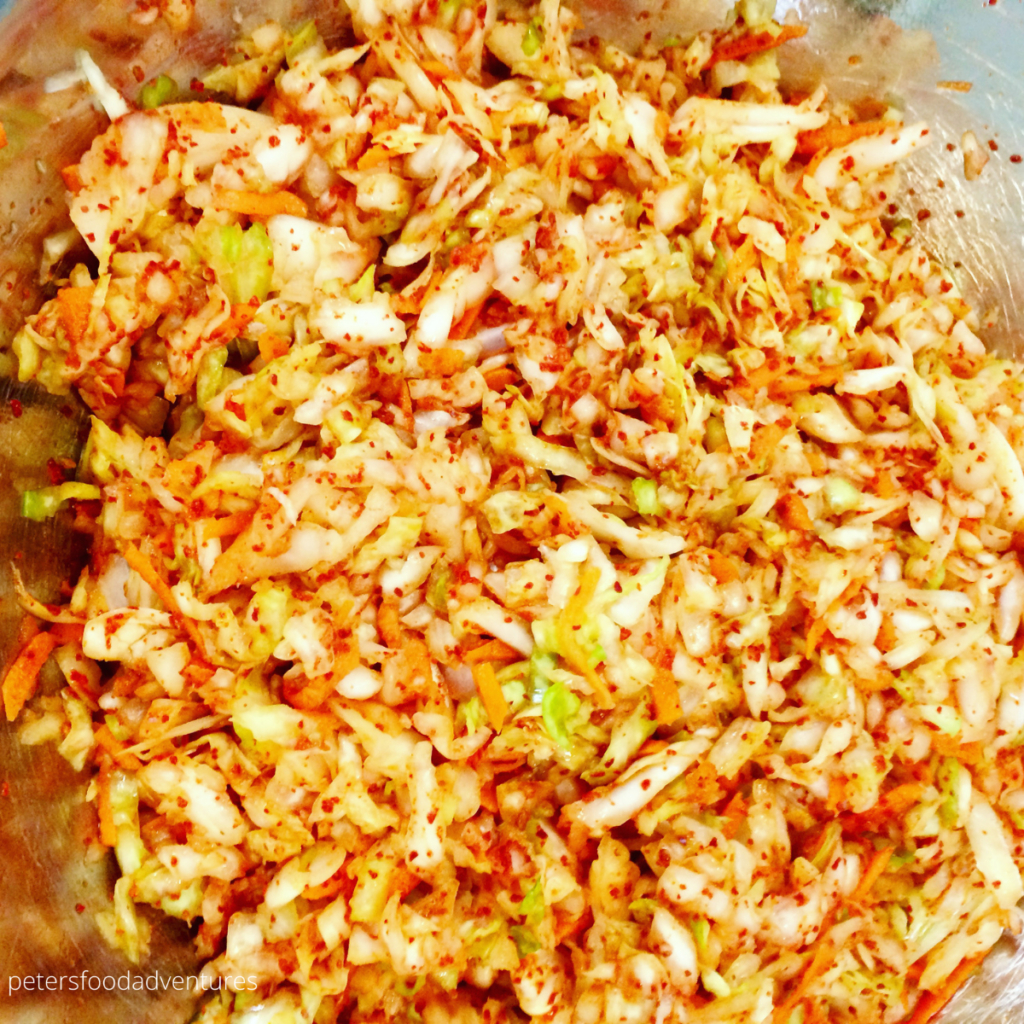
How to Make Spicy Sauerkraut
- Prepare Cabbage - remove the outer leaves of the cabbage, keep 1 cabbage leaf for later and discard the rest. Cut the cabbage into quarters, remove the core, and shred thinly, like you are making coleslaw. Place into bowl.
- Prepare Vegetables - chop onion, mince onion and grate carrot and add to bowl of cabbage.
- Add Seasoning - add salt and sprinkle with Gochugaru Korean Chili Flakes.
- Mix - put on some gloves and massage the cabbage mixture with your hands for about 5 minutes until it starts to release its liquids. Ensure ingredients and fully mixed through the cabbage.
- Cover - place a plate large enough to cover the cabbage mixture, over the cabbage. Put something heavy on it, like a jar filled with water over the cabbage mixture. This will add pressure to the cabbage to keep releasing the juices and keep it submerged in the brine. Allow to rest for about 1-2 hours to continue the process of liquids releasing.
- Fill and Cover - place cabbage mixture into a sterilized container (I'm using a glass jar). Pour any leftover brine into the jar. Cover with leftover cabbage leaf you set aside. Add filtered water if brine isn't covering the cabbage.
- Add Weights - place fermentation weights (or a heavy jar) on top of the cabbage leaf to keep cabbage submerged. Cover loosely with a tea towel to allow air flow.
- Ferment - allow the cabbage to ferment for at least 3-4 days at room temperature. Taste. If you like the taste more sour, continue fermenting until you are happy with the taste. I don't usually go longer than 1 week, but can ferment up to 3 weeks.
- Refrigerate - close jar with lid and keep refrigerated for up to 2 months. Check that it smells ok and there's no mould and tastes fine. Trust your stomach, if it doubt, throw it out.
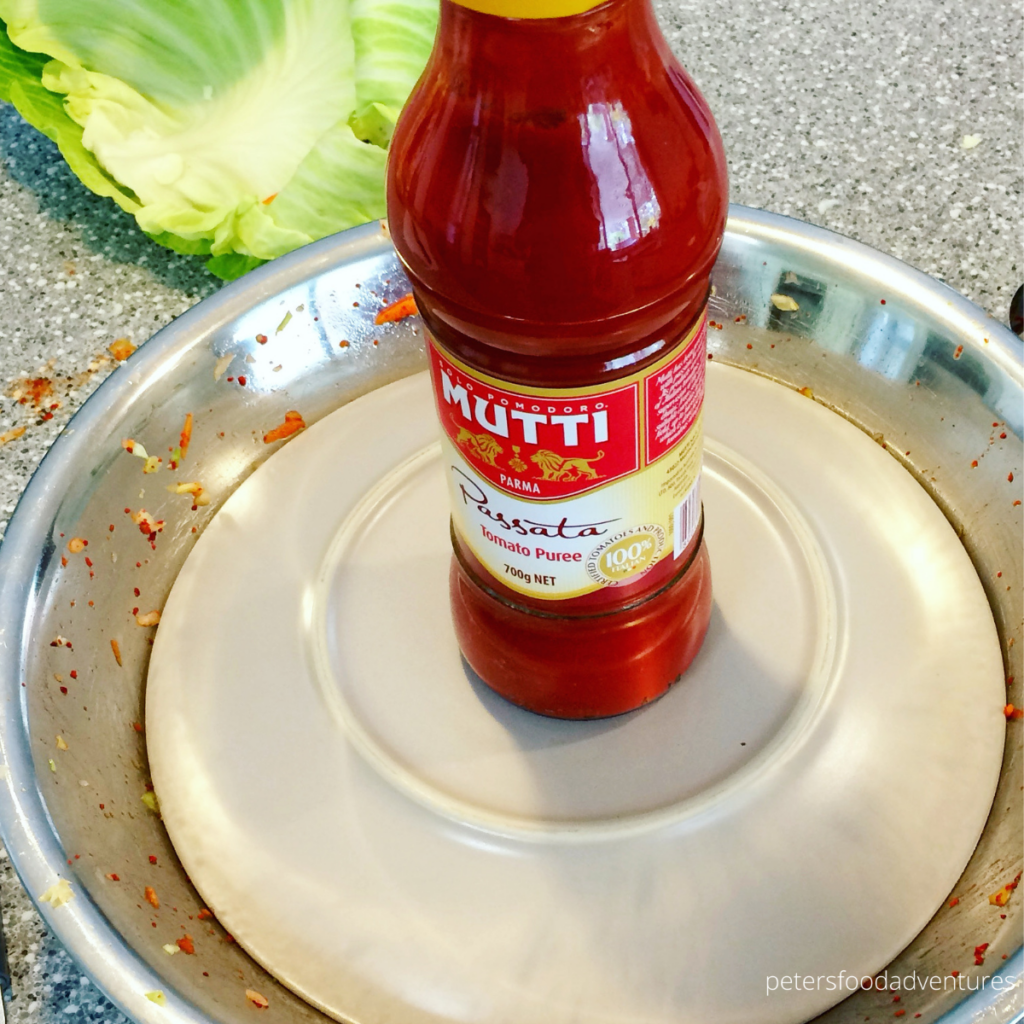
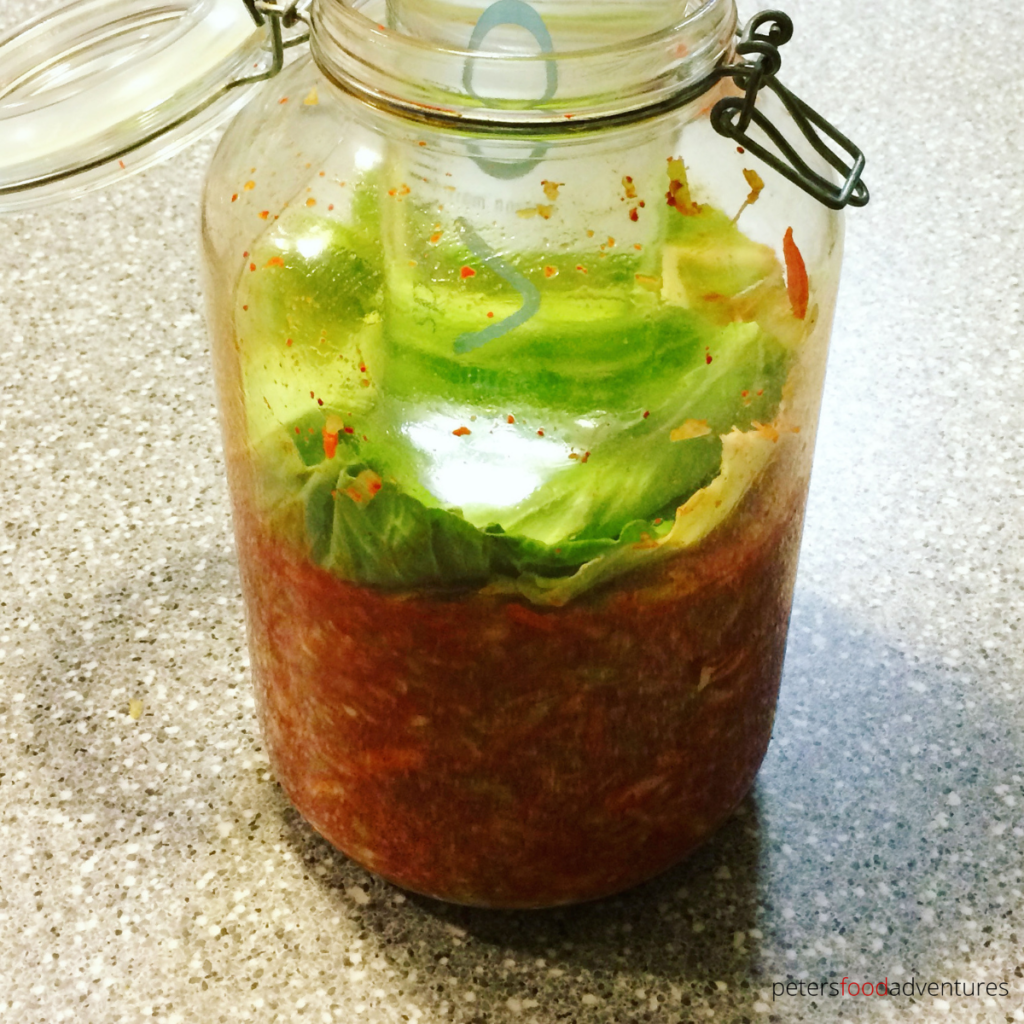
Spicy Variations
- Gochugaru Flakes - gentler chili flakes, with less heat, add unique smokiness and flavor (substitute regular chili flakes in all your recipes!)
- Red Pepper Chili Flakes - substitute instead of Gochugaru for spiciness
- Jalapeños - chop fresh jalapeños for spicy variation
- Chipotle Peppers - for a smokey, spicy flavor, chop up Chipotle Peppers in Adobo Sauce for an authentic Mexican flavor
- Chinese Chili Powder - a tasty blend of chili powder, cumin and paprika add an Asian twist
- Sriracha Sauerkraut - substitute with ½ cup of Sriracha Sauce for a tasty chili garlic hit
Recipe Tips and FAQs
- Pro Tip: If your cabbage doesn't fit into the bowl, massage it with salt before adding other ingredients. It will reduce significantly as the water is released from the cabbage.
- Use Fresh Cabbage - this will ensure the best flavor and that enough liquid is released from the cabbage
- Sterilize - this is key to minimize risk of fermenting. Ensure jars, lids and utensils are fully sanitized before using
- Make It Your Own - experiment with your own ingredient additions and spicy flavors
- Throw the Mould - sounds controversial, but happens in fermentation. If you see any mould, skim it out immediately, if any cabbage is mouldy, remove it immediately, but the rest of the Sauerkraut is fine. If in doubt, throw it out!
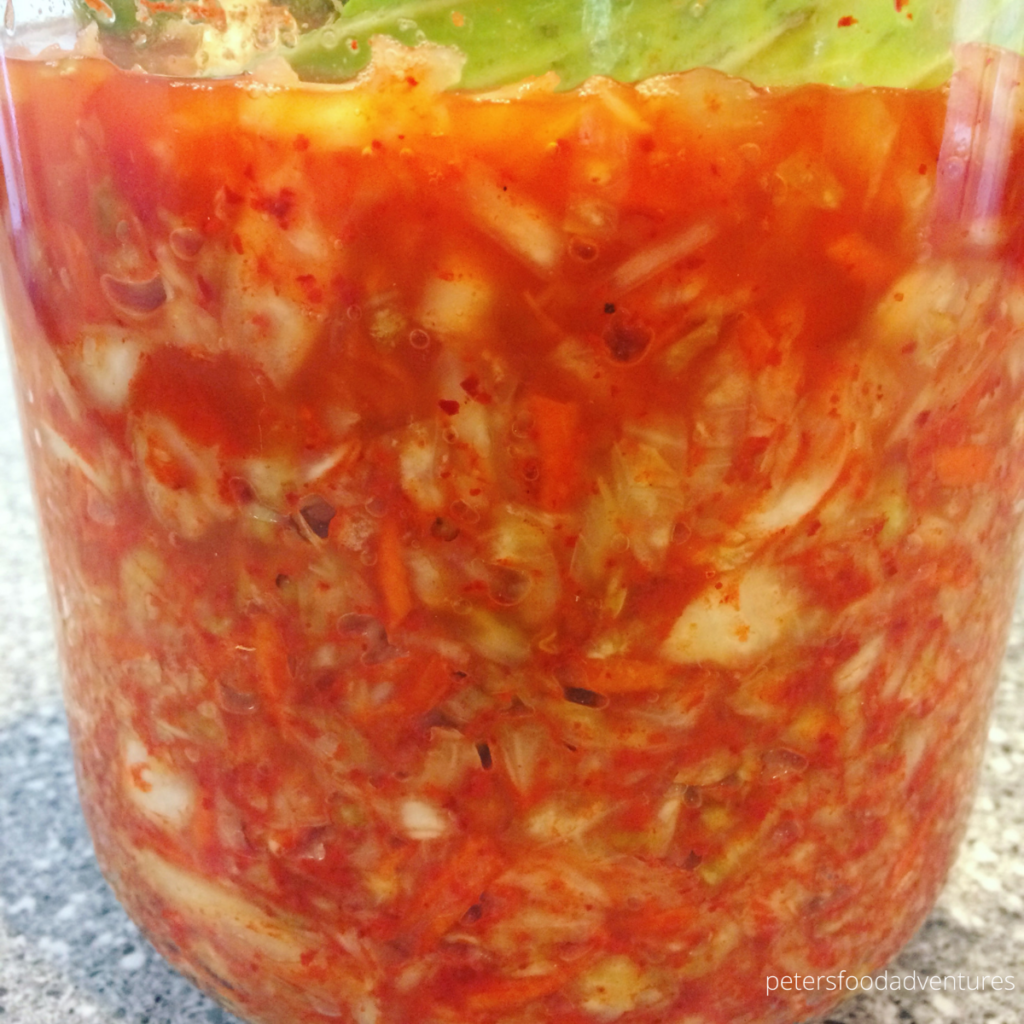
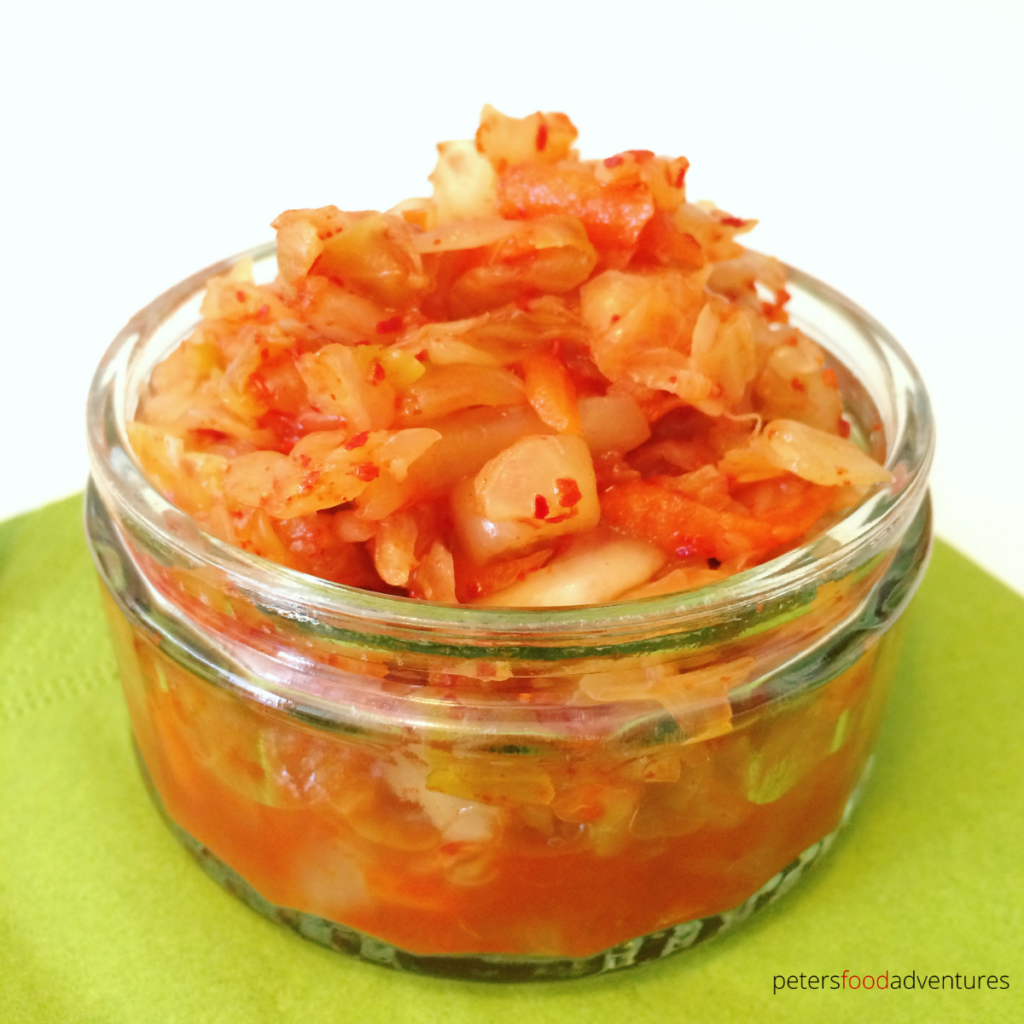
Is Spicy Sauerkraut Same as Kimchi?
Spicy Sauerkraut and Kimchi are different fermentations. They use different cabbage, spices, herbs and aromatics. This recipe adds carrot like Kimchi, but you can omit for a true sauerkraut.
How Do I Know Sauerkraut Has Gone Bad?
Signs of spoilage include off-putting odors, unusual colors, or mould. If you notice any of these, discard the batch.
Can I Add Spice After Fermentation?
Yes! Feel free to add extra flavors or chili spice after it's fermented into sauerkraut. Adjust and personalize to your taste.
Spicy Sauerkraut Serving Suggestions
- Charcuterie Platter - adds fermented spice to complement cheese
- Sandwiches and Wraps
- Hot Dog Topping
- Rice Bowl - add fermented goodness to your rice or Poke bowl
- Stir Fries - add flavor to your next stir fry
- Side Dish - perfect for bbqs or just as a side
- Eggs - add to your scrambled eggs to elevate your brunch
- Burgers - try a spoonful on your chicken burger with avocado slices
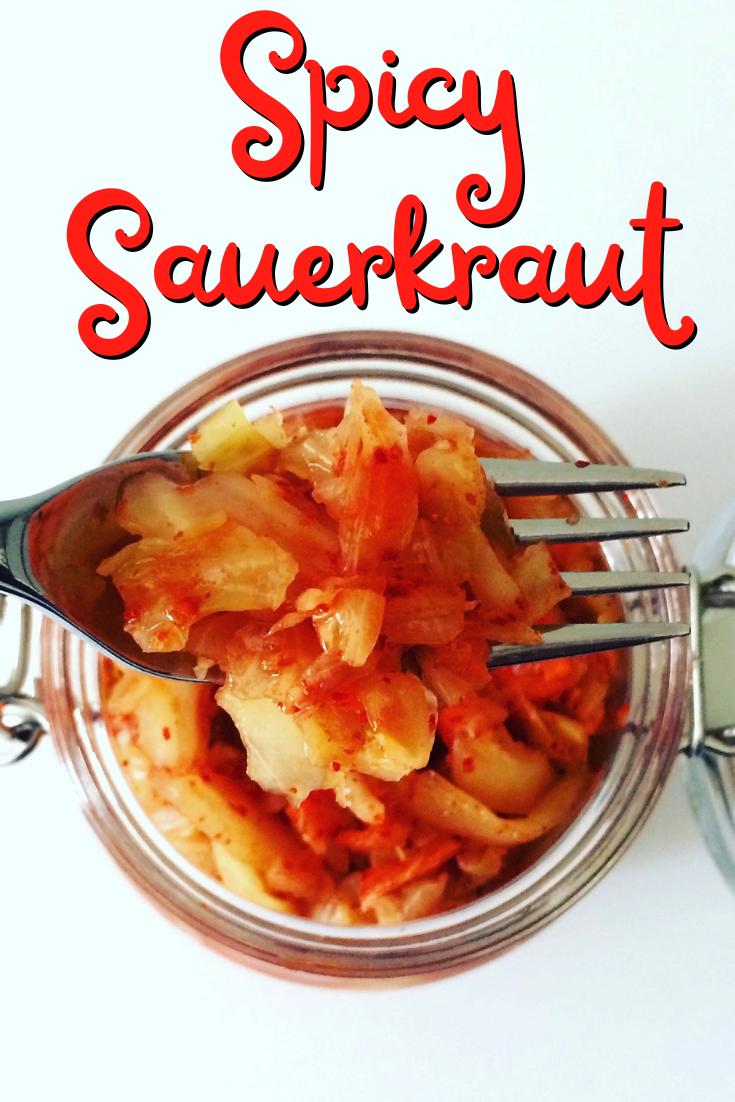
Cabbage Recipes You'll Love
- Quick Pickled Fermented Cabbage
- Georgian Fermented Cabbage (with Beets)
- Russian Cabbage Pie
- Butter Braised Cabbage
- Shchi - Cabbage Soup
- Kimchi Fried Rice
- Golubtsi Cabbage Rolls
- Korean Kimchi
Not only a delicious condiment, but something you can be proud to serve because you made it yourself! Tangy and crunch fermented cabbage, roll up your sleeves and make your own homemade sauerkraut. Bon Appetit! Приятного аппетита!
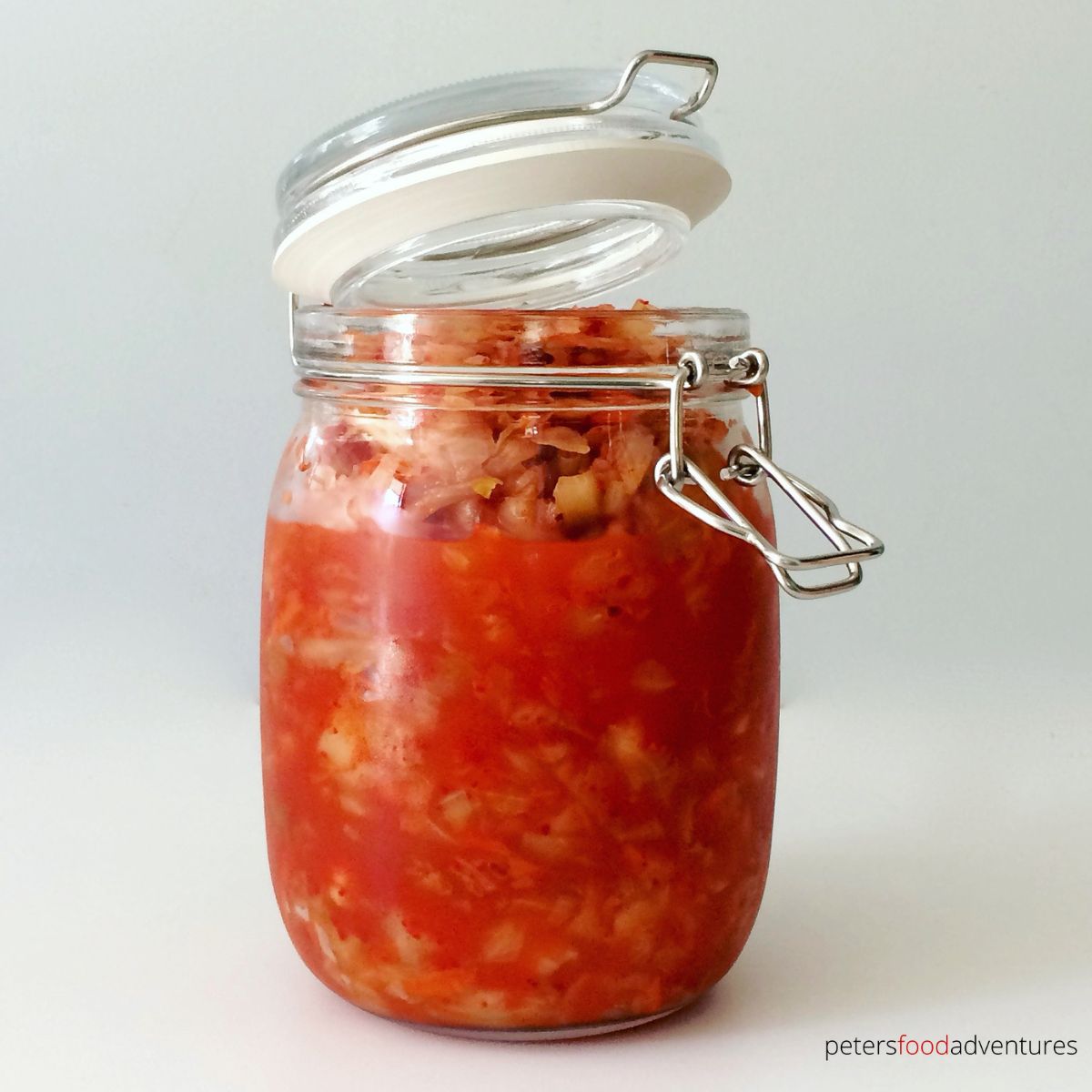
Ingredients
- 1 medium cabbage about 1 kg
- 1 tablespoon salt non-iodized
- 1 clove garlic minced
- 1 onion chopped
- 1 carrot gratedl
- ¼ cup Gochugaru Korean Chili Flakes
Instructions
- Prepare Cabbage - remove the outer leaves of the cabbage, keep 1 cabbage leaf for later and discard the rest. Cut the cabbage into quarters, remove the core, and shred thinly, like you are making coleslaw. Place into bowl.
- Prepare Vegetables - chop onion, mince onion and grate carrot and add to bowl of cabbage.
- Add Seasoning - add salt and sprinkle with Gochugaru Korean Chili Flakes.
- Mix - put on some gloves and massage the cabbage mixture with your hands for about 5 minutes until it starts to release its liquids. Ensure ingredients and fully mixed through the cabbage.
- Cover - place a plate large enough to cover the cabbage mixture, over the cabbage. Put something heavy on it, like a jar filled with water over the cabbage mixture. This will add pressure to the cabbage to keep releasing the juices and keep it submerged in the brine. Allow to rest for about 1-2 hours to continue the process of liquids releasing.
- Fill and Cover - place cabbage mixture into a sterilized container (I'm using a glass jar). Pour any leftover brine into the jar. Cover with leftover cabbage leaf you set aside. Add filtered water if brine isn't covering the cabbage.
- Add Weights - place fermentation weights (or a heavy jar) on top of the cabbage leaf to keep cabbage submerged. Cover loosely with a tea towel to allow air flow.
- Ferment - allow the cabbage to ferment for at least 3-4 days at room temperature. Taste. If you like the taste more sour, continue fermenting until you are happy with the taste. I don't usually go longer than 1 week, but can ferment up to 3 weeks.
- Refrigerate - close jar with lid and keep refrigerated for up to 2 months. Check that it smells ok and there's no mould and tastes fine. Trust your stomach, if it doubt, throw it out.
©PetersFoodAdventures.com *originally published November 2015, updated November 2024
